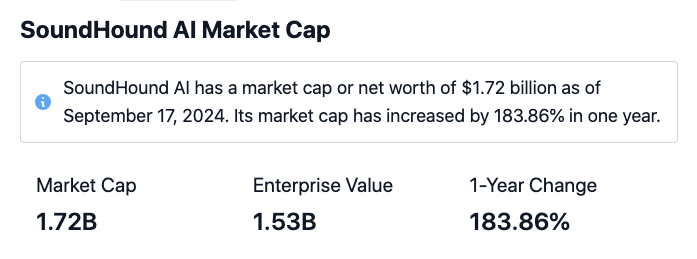20 Recommended Suggestions For Choosing Trading Chart Ai Websites 55038722
admin
- 0
Top 10 Tips On Assessing The Customer Support Of Ai Platform For Predicting/Analyzing Trades
Support from the customer is crucial when choosing the best AI platform for analyzing and predicting stocks. Support that is responsive and reliable can make all the difference in time to solve issues, increase utilization of the platform, create a smooth trading environment, etc. Here are 10 top suggestions to analyze the customer support provided by these platforms.
1. Evaluate Support Availability
24/7 Support: Ensure the platform provides round-the-clock customer support. This is particularly important for trading in real time and on global markets.
Hours of operation If you do not have 24/7 support, make sure that support is available to you during your business hours.
Holiday coverage: Verify whether support is available on weekends, holidays, or market closures.
2. Test Response Times
Initial response. Send an initial test query to support to gauge how quickly they’ll be able to respond.
Resolution time: Calculate the amount of time needed to resolve a problem.
Live chat: If available test the responsiveness and effectiveness.
3. Assess Support Channels
Multi-channel support: Make sure the platform offers support through different channels (e.g. email or phone call live chat, email, and social media).
Preferred channel: Verify that the support channel you prefer (e.g. phone, chat) is accessible and reliable.
Self-service: Use the FAQs or knowledge base to quickly solve problems.
4. Evaluation of the quality of support
Expertise: Support staff must be familiar with the platform and issues related to trading.
Test your support agent’s ability to solve complex problems and escalate them appropriately.
Professionalism – Check to see whether interactions with support personnel are helpful, friendly, and professional.
5. Look for dedicated Client Managers
Support premium: Verify that the higher-tier users and institutional customers have access dedicated account managers.
Personalized assistance: Assess whether your account managers offer individualized support and a proactive approach.
Building relationships – Make sure that account managers are contactable and build long-term relationships with users.
Check the Documentation Help
Knowledge base. Check that the platform is a well-organized database of tutorials, guides, and suggestions for troubleshooting.
Video tutorials: See whether the platform has webinars or video tutorials for those who prefer visual learning.
API documentation. If you are a programmer, check if the platform you are using has detailed and precise API documentation.
7. Assessing Community and Peer Support
Forums for users Find out if there’s an active user community or a forum on the platform where users can discuss tips and ideas.
Social media groups: Search for non-official social media groups (e.g. Reddit. Facebook. LinkedIn) that discuss the platform.
Community engagement – Examine to determine if there’s an active involvement of the platform’s staff in online forums or community discussions.
8. Evaluate Escalation Processes
Issue escalation – Ensure that there’s a clearly defined procedure for escalating concerns that are not resolved to support or management levels.
Follow-up – Check to see whether the support team follows up with you once you’ve solved the issue.
Feedback loops: Verify the ability of the platform to collect user feedback in order to improve support services.
9. Test Support for Critical Situations
Market volatility: Contact support during periods of high-volatility and evaluate their receptivity.
Issues with technical aspects: To see how support can resolve an problem (e.g. log-in issues or data discrepancy), simulate one.
Trade execution: Determine whether the support team is able to help with urgent issues in trade (e.g., delayed execution, unsuccessful orders).
Review of User Feedback from Reviews
Online reviews: Read reviews from users on platforms like copyright, G2, or Reddit to determine overall satisfaction with support.
Testimonials: Search for reviews or case studies that demonstrate positive experiences in support.
Complaints: Check how the platform handles complaints and negative feedback on support.
Bonus Tips
Test out the platform with a demo or trial period.
Support for languages. If you do not speak English ensure you verify that support is available in the language of your choice.
Training and Onboarding Determine whether the platform has training sessions or even onboarding to help new users beginning their journey.
It is possible to evaluate customer service for AI stock predicting/analyzing platforms by following these suggestions. When you do so, you will be able choose a platform which provides quick, reliable and efficient help. Support from the customer that is prompt and efficient can enhance your overall experience. See the most popular stock ai for blog recommendations including stock analysis app, trader ai intal, incite ai, ai investment app, ai stock trading bot free, ai investment app, best stock analysis app, free ai tool for stock market india, copyright ai trading bot, ai investment platform and more.

Top 10 Tips To Assess The Latency And Speed Of Ai Stock Trading Platforms
The speed and latency of the trading platform are important factors to consider, especially in the case of active traders as well as high-frequency investors and algorithmic traders. Millisecond delay can have an effect on the profit of the trade. Here are the 10 best ways to measure the speed of the platform.
1. Real-time data feeds: How do you analyze them
Data delivery speed: Make sure your platform provides real-time data (e.g. sub-millisecond delay).
Data source proximity – Look to see if the servers on your platform are within important exchanges. This will reduce the speed of data transmission.
Data compression: Check if the platform is using effective data compression to speed up data delivery.
2. Test Trade Execution Rate
Time to process orders: Determine how fast the platform process and executes trades after you submit an order.
Direct Market Access: Make sure that the platform provides DMA. DMA is a feature that allows you to transfer orders directly to exchanges without intermediaries.
Execution Reports: Check if your platform offers specific reports on the execution of orders, including timestamps.
3. Examine the Platform’s Responsiveness
User interface (UI) speed: See how fast the UI on your platform responds to inputs (e.g. pressing buttons, loading charts).
Chart updates Verify whether charts and visuals have a real-time update with no lag.
The performance of mobile apps: If you use mobile apps on your phone, ensure that it’s as efficient as the desktop version.
4. Look for infrastructure that is low-latency.
Server Locations: Choose servers with low-latency that are near major financial centers or exchanges.
Co-location: If the platform provides co-location, you can host your trading algorithm on servers close to the exchange.
High-speed networks: Check if the platform is running high-speed fiber optic networks or low-latency technology.
5. Evaluate Backtesting and Simulation Speed
Find out how quickly the platform analyzes and processes historical data.
Simulation latency: Make sure that the platform simulates trades in real-time with no significant delays.
Parallel processing: Determine whether your system uses distributed computing or parallel processing to speed up calculations.
6. The API Latency Measurement
API response: The API’s API is measured by the time it takes to respond to requests.
Rate limits: Verify that the API has adequate rate limits to avoid delay during high-frequency trading.
WebSocket support: Determine whether the platform supports WebSocket protocols for real-time and low-latency streaming of data.
7. Test Platform Stability when Loaded
The scenarios of trading with high volumes Check the stability of the platform and its responsiveness by simulating trading scenarios.
Try the platform out in periods of high volatility in the market to see if it is able to withstand rapid fluctuations in price.
Check the platform’s tools to stress-test your strategies under extreme conditions.
8. Examine the network and connectivity
Internet speed requirements. Check that your connection speed is sufficient to reach the recommended speed of your platform to ensure the best performance.
Reliable Connections: To avoid downtime, check if your platform supports redundant internet connections.
VPN latency: If you are using a VPN, verify if it introduces significant latency. Also, determine if the provider offers alternatives.
9. Check for speed optimization features
Pre-trade Analytics: Ensure that the platform provides pre-trade analysis to improve order routing, execution speed and other factors.
Smart order routing (SOR) is also referred to as smart order routing, is a method of determining the most speedy and efficient execution sites.
Monitoring latency: Verify if the platform provides tools to monitor and analyze latency in real-time.
10. Review Feedback from Users and Benchmarks
Feedback from users: Use reviews from users to assess the platform’s performance in terms of speed and latency.
Third-party benchmarks by third parties. Look for independent benchmarks or reviews that evaluate the speed of a platform with other platforms.
Case studies: See whether the platform provides case studies or testimonials that showcase its abilities to provide low-latency.
Bonus Tips:
Trial period: You are able to make use of a demo or trial period to test the performance and latency of the platform.
Customer Support: Check whether the platform provides assistance with issues related to latency, or for optimization.
Hardware requirements: Determine if the platform requires specific hardware (e.g. high-performance PCs) to operate at its maximum speed.
With these suggestions that you will be able to assess the performance and speed of AI stock-predicting and analyzing trading platforms and ensure that you select one that is compatible with your requirements for trading and reduces delays. Low latency, especially for high-frequency and algorithmic trading, is vital. Even small delays could greatly impact profits. See the top additional hints about ai trading software for blog info including ai stocks to invest in, chart ai for trading, ai trading software, stock market software, ai trading, ai stock picker, ai stocks, ai stocks, ai stock trading app, invest ai and more.
